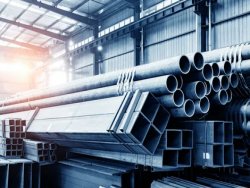IEEFA notes that Oman already has a rare, fully integrated steel production ecosystem, including iron ore concentration, pelletizing, direct reduction, and electric arc furnace (EDP) operations. The country also plans to develop new domestic iron ore processing facilities.
Oman's current industrial base is particularly well suited for the transition to low-emission steel production, given the progress in direct reduction iron (DRI) production, which could eventually be produced using green hydrogen instead of fossil gas. However, the report highlights that gas-based DRI still requires high emissions and cannot achieve "green steel" status without switching to hydrogen-based production.
Renewable energy sources and a hydrogen strategy provide a competitive advantage
Oman's large-scale investments in solar and wind energy constitute one of its biggest advantages. Abundant and inexpensive renewable energy will be crucial to power the electric arc furnaces, DRI modules, and electrolysis cells needed to produce green hydrogen.
The country aims to produce 1.0-1.5 million tons of green hydrogen by 2030, creating a substantial supply base for hydrogen-intensive industries such as the steel industry.
Strategic geography and industrial policy enhance the dynamics
Oman benefits from an abundance of land for industrial development and a strategic geographical location with direct access to major export markets in Europe and Asia.
The green Steel program is included in the Oman Vision 2040 program, which aims to increase the share of non-oil GDP above 90 percent. The National Hydrogen Strategy, which includes infrastructure development, investment incentives, and long-term implementation mechanisms, supports these goals.
New investors accelerate low-carbon steel production projects
Although






